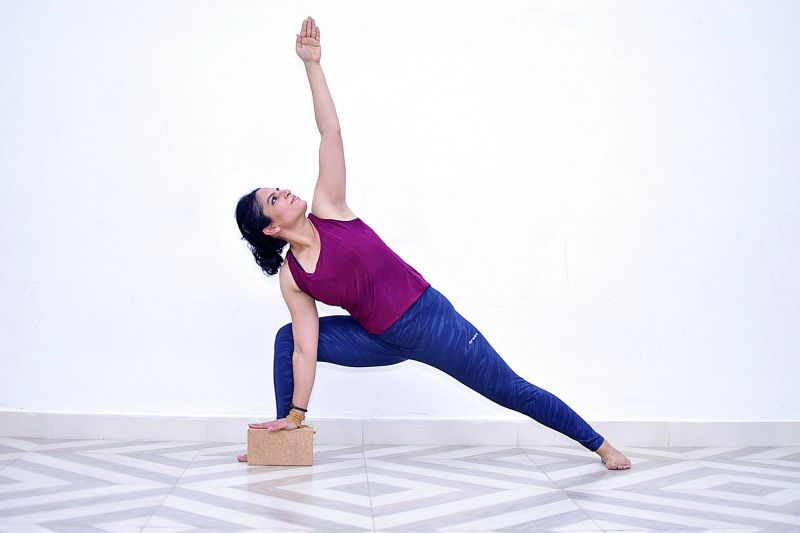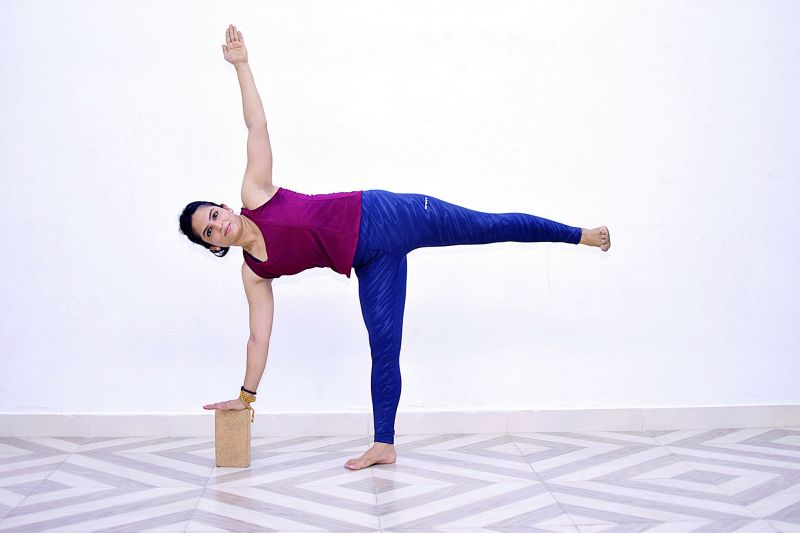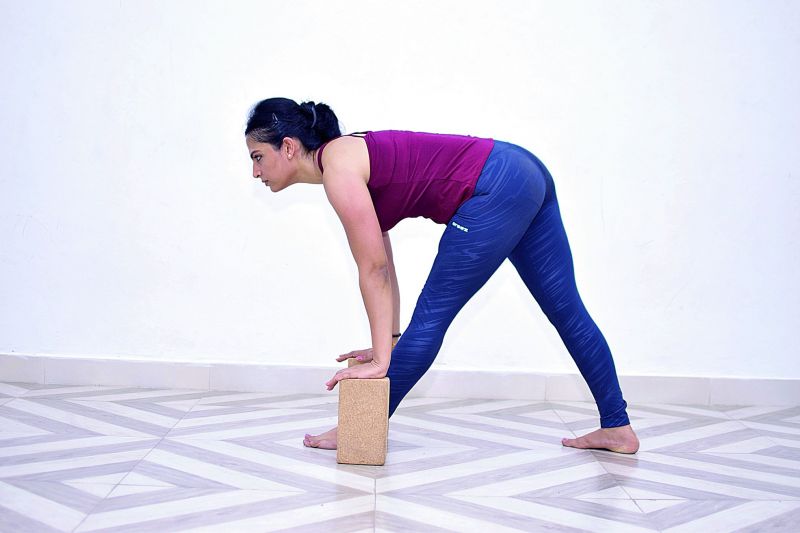Accessorise your yoga routine

With hundreds of prevailing yoga poses already in practice, modern yogis are now on a spree to add a new twist to this age-old practice. Fitness fanatic Malaika Arora recently posted a series of images on Instagram, in which she is seen deftly balancing herself on two bricks while she pulls off advanced and complicated yoga poses with professional ease. Whether you are a novice or an advanced yoga practitioner, this simple accessory helps to achieve the perfect alignment and asana.
Extended Side Angle pose:
Try to engage your muscles fully to create a single extension from the outer heel of the straight leg all the way to the fingertips of the arm overhead. There are three stages to the pose. First, establish the foundation in your legs. Then focus on stretching the arms to expand the chest. Finally, as you bring your top arm over your ear, rotate the belly and chest up while expanding the rib cage.
Benefits
This pose strengthens and stretches the legs, knees and ankles. Also stretches the groin, spine, waist, chest, lungs and shoulders. Stimulates abdominal organs and increases stamina.

Extended triangle pose
Put the yoga brick under your lower hand (the one reaching for the floor) for stability. You can lay the brick flat, prop it on a side, or let it stand at the end, depending on the length of your reach. Extend arms and legs fully, and keep chest open. On one side, your arm reaches strongly into the air as your torso lengthens all the way down to the grounded leg. As you look up at your hand in mid-air, the brick ensures you won’t wobble, allowing you to focus on breathing deeply and evenly into the pose.
Benefits
It works your thighs, knees, hips, groin, hamstrings, calves, chest, spine and shoulders.
Ardha Chandrasana or Half-moon pose
Position the yoga block 6-12 inches in front of the standing foot, slightly to the outside and at the highest height level. From a high-lunge position with the right foot forward, place your hand on the block and use it to extend up and out of the shoulder while stepping onto the right foot and straightening the right leg. Lift the left leg up parallel to the floor. Roll the left hip up and back and turn the whole torso so that the entire front of the body is facing the side wall.
Benefits
When using the block to aid in balance, you’ll be able to slowly open the hips and reap the benefits of strong ankles, knees, legs and mental focus.

Parsvottanasana: Parsvottanasana requires a combination of flexibility, strength and patience. With the help of props such as blocks or a wall, the pose becomes accessible for everyone. Place hands on blocks to help keep the torso long.
Benefits | From lengthening the spine, stretching the legs to calming the mind, there’s a little bit of everything in Parsvottanasana. Also known as the intense side stretch pose or pyramid pose, this asana is helpful for finding balance and stimulating digestion.

Parivrtta AnjaneyasanaFold forward into Uttanasana. Bend your knees so that you can place both hands on the floor next to your feet. Step your right leg back three feet or so, so that your left shin is vertical and your whole body is angled at a slant. Placing right hand on the floor or on a yoga block, lengthen torso as you rotate it toward your left leg, allowing your pelvis to rotate along with the torso. Your left hip will be higher than your right hip. Keep your right leg active. Extend back through your right heel. You can place your left hand on your hip, or if you like, extend it straight up toward the sky.
Benefits
It is a standing twist pose that benefits the spine, increasing its range of motions (ROM) mostly in the upper back region. This pose tones the muscles in the hips, abdomen, chest, shoulders, legs and the back with stretching, thereby increasing flexibility.


